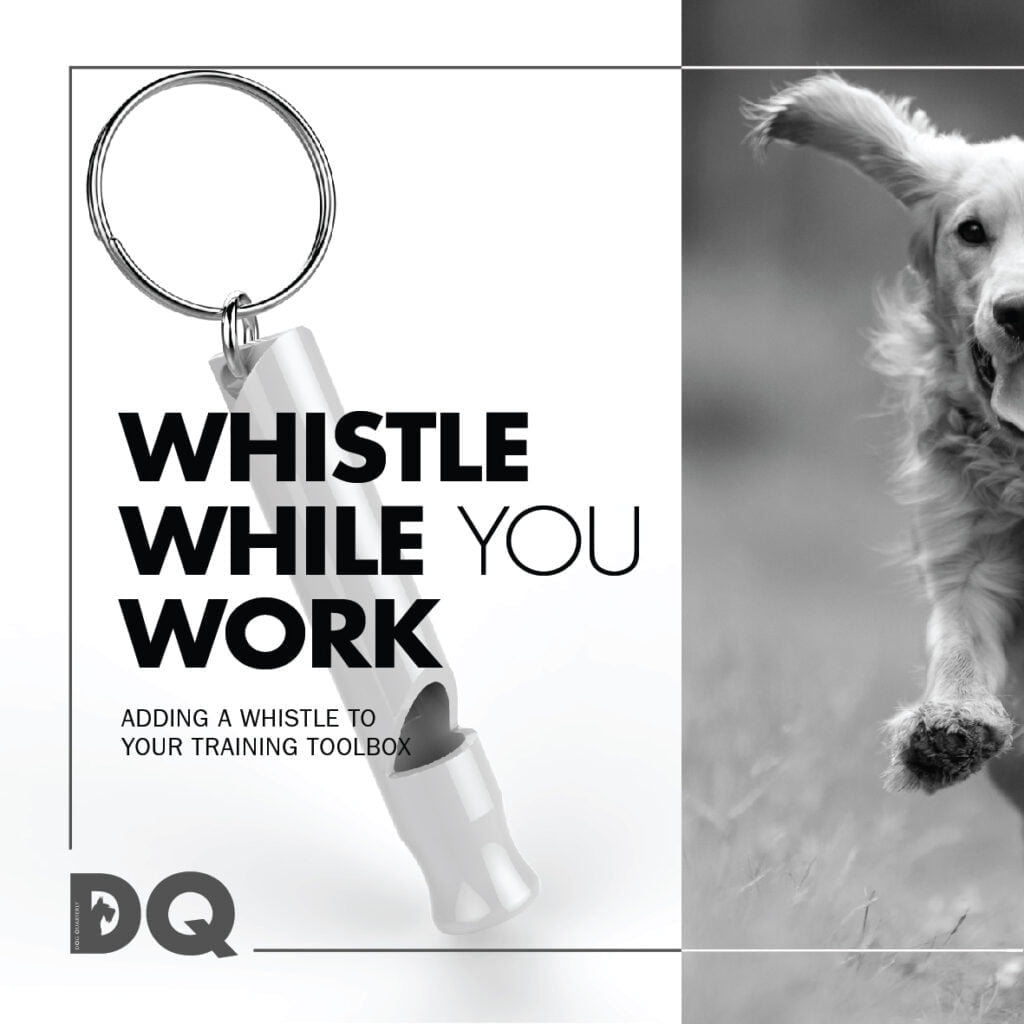By Sarah Wanless
Rank Reduction Programmes (RRPs) were developed as a response to behavioural problems in dogs. RRPs are based on the thinking that all behavioural problems are simply dominance problems and that a dominant dog can be dealt with by reminding the dog of his position at the bottom of the familial pack while reaffirming the owner’s position as the Alpha [1].
Despite plenty of scientific evidence indicating that RRPs are outdated and harmful methods of training, many trainers and owners continue to use them today as the basis of their methods for dealing with ‘problem behaviour’. Here we look at exactly why these theories are so misguided and, indeed, harmful to our canine companions and their bond with us.
Origins
RRPs originated from outdated dominance theory principles derived from the now debunked Wolf Pack Theory. This theory postulated that, as dogs are descended from wolves, the same familial structure of wolves would be applicable to dogs. However, most of the early information pertaining to wolf pack structure and dynamics was taken from the study of estranged wolves in captivity by Zimen in 1997. In this study, violent fights were commonly reported between both males and females and assumed to be over dominance [2].
Thanks to the work of Mecc, published in 1999, after his extensive observation of wolves in the wild over a period of 13 summers, the true dynamic of wolf packs has been brought to light. Mecc’s work revealed that a typical wolf pack is a family unit comprising the breeding pair (adults) and their offspring, ranging from 1-3 years old. The youngsters will then leave the pack when they become sexually mature and form a family pack of their own. There are seldom violent conflicts between the pack, with most conflicts being resolved with vocalisations and body language, and the position of ‘Alpha’ never being contested [3].
While this is already a convincing argument for RRPs and dominancy theory having no place in dog training, studies of feral dogs provide even more compelling evidence that the rationale behind these methods is flawed. Feral dogs form loose, unstructured, temporary social structures and not tight, bonded family packs. The family unit isn’t a key component of feral dogs, and the survival of the pups isn’t as of paramount importance as it is in wolf packs. In addition, feral dogs, and dogs in general, have evolved into scavengers, no longer needing to work together to hunt. Essentially, even in closer relatives to our domesticated dogs, the dominance theory holds no weight, and RRPs have no place [4].
As a final argument, it is also worth noting that as humans are incapable of the same vocal or physical communication as dogs, there is really no way a dog would consider a human as one of his own species/pack or himself to be part of the human pack.
What does a Rank Reduction Programme involve?
An RRP is premised around methods assumed to be utilised in wolf (and by ancestral association dog) packs to maintain the pack hierarchy and quash any unwanted behaviour by pack members. An RRP encourages the owner to adopt the principles listed below in an attempt to mimic an ‘Alpha wolf’ and thereby reinforce their status as leader of the pack. The following are a few of the methods that have been adapted and are commonly applied in many RRP strategies:
- the owner should always eat before the dog (based on the notion that the pack leader eats first)
- dogs shouldn’t be allowed to sleep on the bed or couch
- your dog shouldn’t be allowed to come to you to initiate contact and get attention
- dogs shouldn’t go through the doorway first
- you shouldn’t play tug-of-war games with your dog [5].
The dangers of RRPs
At the onset, it is evident that one of the main issues with an RRP approach is that all behavioural problems are lumped together and are viewed as dogs simply being dominant. This is problematic for several reasons. Any behavioural problem needs to be addressed holistically, looking at all elements of the dog’s life (breed, physical and mental stimulation, lifestyle, diet, health conditions and ruling out pain, to name a few). After all these elements have been examined, a plan needs to be developed to address the cause of that specific behaviour. Simply attributing the problem to the outdated construct of dominance thus neglects finding or indeed addressing the actual cause of the behaviour. So, while an RRP may seem, on the surface, to address the behaviour, in fact, the behaviour is merely suppressed (as the issue has not been dealt with). This means that as an appropriate behaviour has not been taught and reinforced and subsequently re-reinforced, so when life returns to normal, it is likely that the ‘problem behaviour’ will reappear.
Secondly, by denying your dog previously allowed comforts, such as sleeping on the bed, seeking contact and comfort or having unfettered access to toys, you are, in effect, indiscriminately punishing the dog. This is psychologically cruel to the dog and, most of the time, will not result in successfully replacing the problem behaviour. If the behaviour doesn’t reoccur, it won’t be as a result of a positive experience for your dog and will have come at a cost. This punishment can lead to future conflicts, depression, behaviour suppression and learned helplessness [6]. This is because all dogs will have some form of emotional response to the RRP, whether that is going on the offensive (in the case of the dog trying harder to access the now restricted resources, which can result in increased aggression) or the defensive (with the dog shutting down which may appear to some as the behaviour having been resolved) [7].
In addition to the psychological harm that implementing an RRP can cause, your relationship with your dog will also be compromised. Activities such as playing with your dog, cuddling with your dog on the bed or couch and stroking/petting your dog are all proven to be bonding activities that strengthen your relationship. By withholding these activities, damage will be done to your relationship [8].
Finally, in instances where the behavioural issue is fear-based, it has been noted that using punitive measures (such as RRPs) can reinforce that fear response and, as mentioned above, worsen the behaviour rather than correct it [9].
Final thoughts
As evidenced above, RRPs are not tools used either by wolves or by dogs. As such, attempting to establish hierarchy and assert dominance will not hold much weight in terms of communicating and coexisting peacefully with our canine companions. It is an unfortunate characteristic of humans that we anthropomorphise many things in our lives, including dogs. Sadly, this is often to the detriment of our canine companions. A dog is a dog and knows he’s a dog. Therefore, any attempt on our part to communicate our misguided understanding of dominance (another human construct) with them will be misunderstood, will not have the desired effect and worse yet, is likely to cause harm [10].
References
[1] Eaton, B. (2010). Dominance in Dogs Fact or Fiction? (PDF version) Pg. 46.
[2] Kerkhove, van., W. (2004). A Fresh Look at the Wolf-Pack Theory of Companion-Animal Dog Social Behavior. Journal of Applied Animal Welfare Science. 7(4), 279–285.
[3] Ibid.
[4] Kerkhove, van., W. (2004). A Fresh Look at the Wolf-Pack Theory of Companion-Animal Dog Social Behavior. Journal of Applied Animal Welfare Science. 7(4), 279–285.
[5] Eaton, B. (2010). Dominance in Dogs Fact or Fiction? (PDF version) Pg. 46.
[6] Eaton, B. (2010). Dominance in Dogs Fact or Fiction? (PDF version) Pg. 47.
[7] Eaton, B. (2010). Dominance in Dogs Fact or Fiction? (PDF version) Pg. 48.
[8] Discussion – Verushka Pillay: Certified trainer and behaviorist, Thinking Pets and Canine Communications.
[9] Smith, M. (2012). Time for a sharp exit for canine dominance theory? Available From: https://www.vettimes.co.uk/app/uploads/wp-post-to-pdf-enhanced-cache/1/time-for-a-sharp-exit-for-canine-dominance-theory.pdf (Accessed 17 July 2022).
[10] Eaton, B. (2010). Dominance in Dogs Fact or Fiction? (PDF version) Pg. 48-49.



